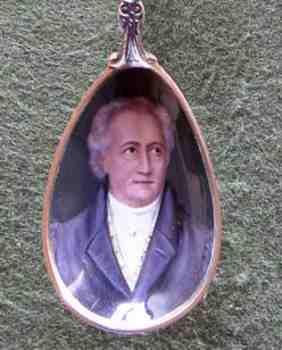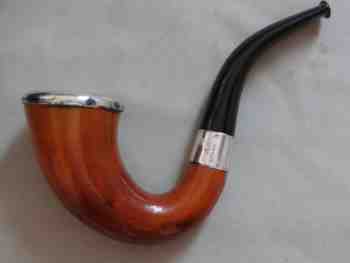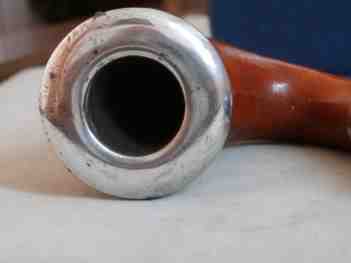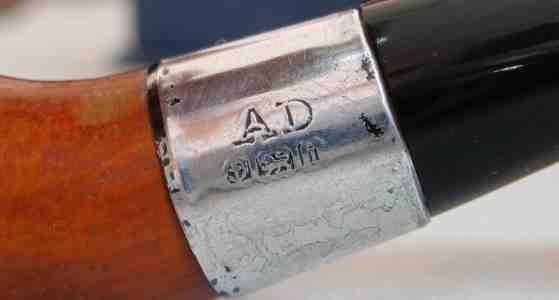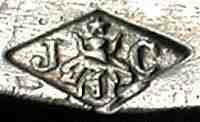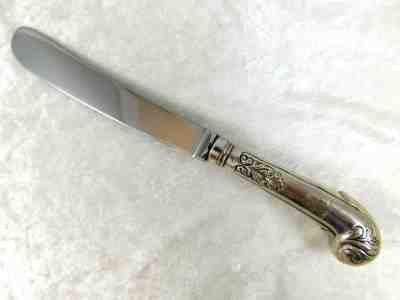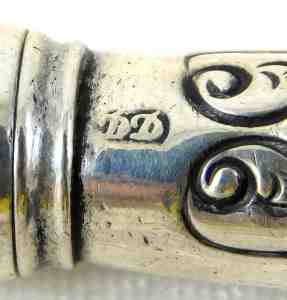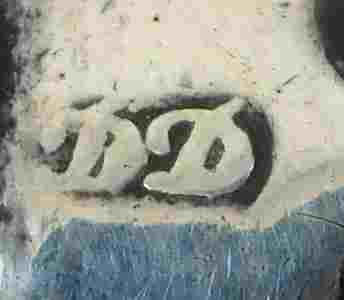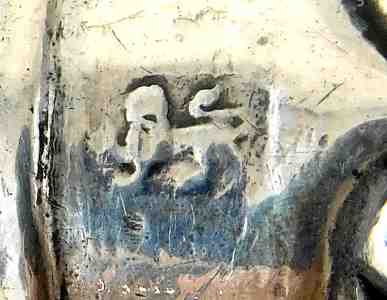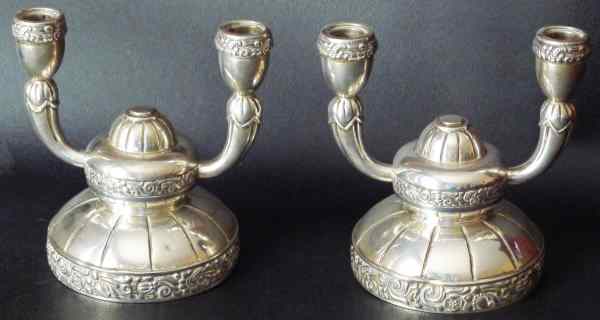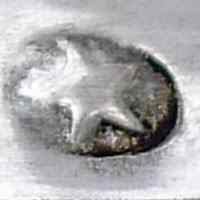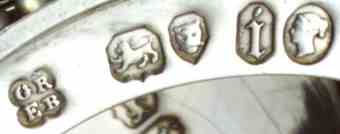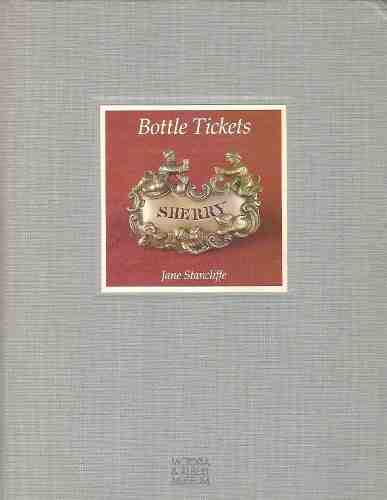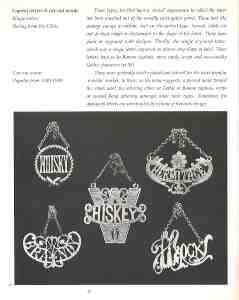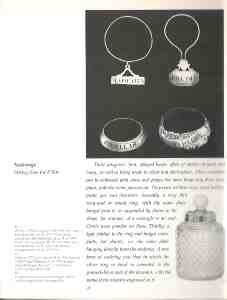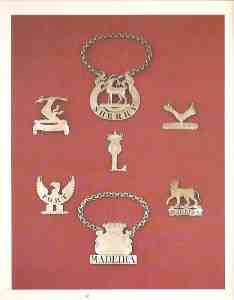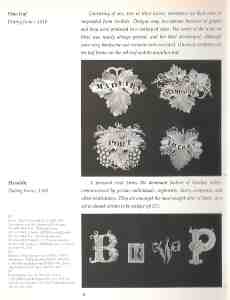 newsletter
# 138 November 2015
newsletter
# 138 November 2015www.ASCASonline.org SITE MAP
email: silverassociation@yahoo.it
YOUR GUIDE TO NOVEMBER NEWSLETTER:
articles
new
members
members' window
|
top page - page map |
Mail to ASCAS: e-mail silverassociation@yahoo.it
Piero Eduardo writes:
... I have a calabash gourd & meerschaum pipe with silver mounts
hallmarked 'AD without frame', Birmingham Assay Office, date
1908.
I need your help to identify the maker.
Piero Eduardo
The silversmith is, presumably, Auguste Dreyfus, 15-16
Featherstone Street, London.
Dreyfus entered hallmarks in Chester as 'pipe manufacturer' in
1885, 1888 and 1890.
Other marks were entered in London as 'pipe & stick mounter' in
1888, 1900, 1902 and 1910.
The hallmark entered in 1902 was cancelled in 1910 and is quite
similar to the mark of Birmingham.
For tobacconists and pipe makers' marks see my website at
http://www.silvercollection.it/dictionarytobacconistA.html
Giorgio Busetto
William Isbister writes:
...Do you have any idea whose mark this is please? (J C a bee
between)
William Isbister
Possibly the maker is
Jean Cheroux, rue Sainte-Avoye, Paris
Mark entered 1827
This maker used a mark JC with a bee over a star
Robert Massart
Debbie Rindge writes:
...Please help identify the maker's mark on this set of 12
British sterling knives.
The only marks are the lion passant and the maker's mark B D in
cursive script.
Thank you,
Debbie Rindge
The maker is Dru Drury II, silversmith registered in the
category "hiltmaker / knifehaft-maker". The mark was entered in
London on 16.12.1767.
Dru Drury II (born 2 February 1725) was the son of Dru Drury I.
He was apprenticed to his father in 1739, free 1746. His mark
was entered in 1767 with address in Wood Street (possibly
following the death of his father). In 1777 he is described as
haft-maker at Strand. Dru Drury and Son were active at Strand,
Corner of Villiers Street (1781-1793).
His elder son William Drury (born 1752) was active as goldsmith
and jeweller at 32 Strand in 1796, by which time his father had
apparently retired (information obtained by Grimwade).
Giorgio Busetto
Replies to questions
Ludo D' Haese
receives this answer about his Spanish candlesticks
(see October 2015 Newsletter)
Jose Luis Muñoz writes:
The mark belongs to Matilde Espuñes y Bagués, granddaughter
of Ramón Espuñes and daughter from his first marriage and first
child of Luis Espuñes. Matilde Espuñes learned the trade from
his father and at his death she established her own business
creating the firm M.Espuñes with an important staff of
goldsmiths and high production of silverware. After the Civil
War (1936-1939) M.Espuñes entered in partnership with the firm
Meneses creating the Unión de Orfebres (Union of Goldsmiths) and
became part of Rumasa group that went out of business in the
third quarter of the 20th century. Matilde Espuñes used the mark
M / cup / E for silver; the figure of an alpaca for cutlery and
M.E. for silverplate.
Jose Luis Muñoz
"A PAGE per MONTH"
In this column we presents a page obtained from makers'
brochures, books, auction catalogs, advertising or whatever
other printed paper, related to silver, that may be of interest
for ASCAS members.
The images will be published at a "low resolution" level and for
private and personal use only.
This column is published under the kind permission of Giorgio
Busetto's website
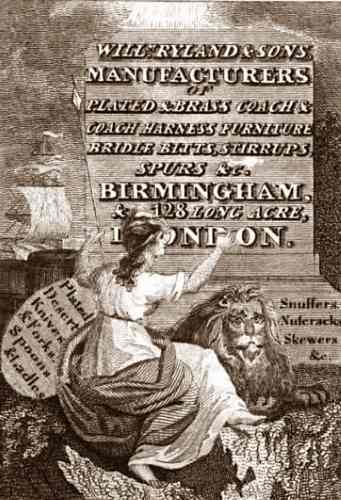
|
This month ASCAS presents an ancient advertisement of:WILLIAM RYLAND & SONSBirminghamWilliam Ryland & Sons was active in Birmingham
as manufacturers of "plated & brass, coach & coach
harness furniture, bridle bitts, stirrups, spurs,
plated knifes & forks, spoons & ladles, snuffers,
skewers, etc".
|
"A WORD per MONTH"
In this column we present an abstract from a page of the "What is? Silver Dictionary"courtesy of
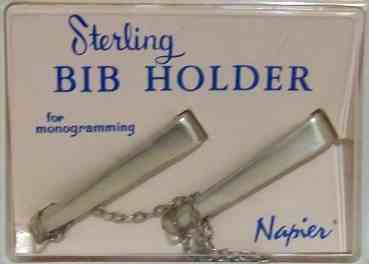
|
BIB HOLDERThe baby bib holder is a silver device used to hold the bib used to protect the clothing while the child is eating.It consists of a short chain with a clasp at its two extremities. Sometimes the clasps have figural shapes as animals or cartoon personages. Sterling silver bib holders were a feature of American society and most of them have been manufactured in the USA in the first half of the 20th century. A precious gift by relatives and friends on the occasion of the birth of a child. more |
"A SILVERSMITH per MONTH"
In this column
we present marks, information and history of silversmiths and
silver manufacturers.
This column is published under the kind permission of Giorgio
Busetto's website

RICHARDS & BROWN, SILVERSMITHS IN LONDON
|
"A BOOK ON MY SHELF"
In this column we present books, new
or ancient, dealing with silver in all its aspects (history,
marks, oddities...). This isn't a "book review" but only a fair
presentation of some useful "tools" that anyone may have in the
shelf of his bookcase.
ASCAS members are invited to contribute to this column
(click to enlarge images)
In the "book on my shelf" of this month ASCAS presents:

Custom Search
Closing our NOVEMBER 2015 edition of ASCAS Newsletter I hope
you have appreciated its content.
Your comments, suggestions and advice will be of great help.
My thanks to Piero Eduardo, William Isbister, Robert Massart,
David McKinley, Jose Luis Muñoz Debbie Rindge for their precious
contributions.
Giorgio Busetto
Secretary
DISCLAIMER AND PRIVACY POLICYASCAS is a community of people having a common
interest in antique silver.
|
